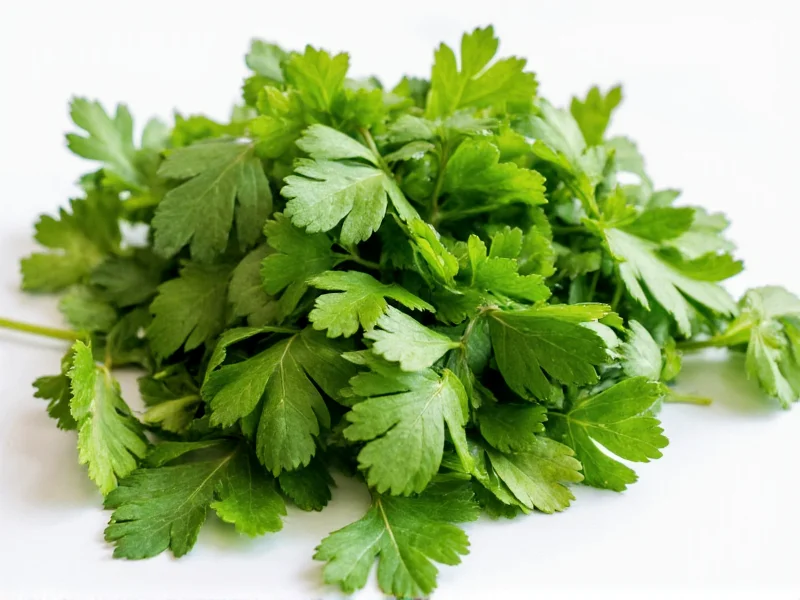Understanding the Parsley-Cilantro Flavor Relationship
When considering whether to replace parsley with cilantro, understanding their fundamental flavor differences is crucial for successful cooking. Both belong to the Apiaceae family but deliver distinctly different culinary experiences. Parsley serves as a neutral background note in dishes, while cilantro makes a bold statement that can dominate a recipe.
Flavor Profile Comparison
The genetic variation in OR6A2 receptors causes approximately 21% of people to perceive cilantro as soapy, making this substitution problematic for some palates. This genetic factor significantly impacts whether cilantro works as a parsley replacement in your specific cooking situation.
| Characteristic | Parsley | Cilantro |
|---|---|---|
| Primary Flavor Notes | Grassy, mild, slightly peppery | Citrusy, pungent, sometimes soapy |
| Best Culinary Applications | Italian, French, Mediterranean dishes | Mexican, Asian, Indian, Middle Eastern dishes |
| Heat Tolerance | Maintains flavor when cooked | Loses flavor quickly with heat |
| Substitution Ratio | N/A | 1:1 for flat-leaf parsley (curly requires adjustment) |
| Storage Duration | Up to 2 weeks refrigerated | 3-7 days refrigerated |
When Substitution Works Best
Successful cilantro-for-parsley replacement depends on your specific recipe and personal taste preferences. The substitution works exceptionally well in:
- Salsas and guacamole where cilantro's bold flavor complements tomatoes and avocado
- Asian stir-fries where both herbs function as garnishes rather than primary flavor components
- Ceviche and other raw seafood preparations where cilantro's citrus notes enhance the dish
- Chutneys and herb-based sauces where stronger flavors are expected
When to Avoid the Substitution
Replacing parsley with cilantro fails in applications requiring subtle herb notes. Avoid this swap in:
- Traditional pesto where parsley sometimes supplements basil
- French fines herbes blends where delicate herb balance is essential
- Dishes featuring delicate flavors like sole meunière or chicken piccata
- Recipes specifically calling for curly parsley as a neutral garnish
Practical Substitution Guidelines
When substituting cilantro for flat-leaf parsley, maintain a 1:1 ratio by volume. For curly parsley substitutions, reduce cilantro by 25% since curly parsley has more air space between leaves. Always add cilantro at the end of cooking to preserve its volatile flavor compounds, unlike parsley which can withstand longer cooking times.
Consider your audience's cilantro perception when making this substitution for groups. Approximately one in five people genetically perceive cilantro as soapy, which could ruin your dish for them. When cooking for others, ask about cilantro preferences before making this herb swap.
Alternative Substitutes When Cilantro Isn't Ideal
If you need to replace parsley but cilantro doesn't suit your recipe, consider these alternatives:
- Chervil: Offers similar mildness with subtle anise notes
- Arugula: Provides peppery notes that work in salads and garnishes
- Basil: Best for Mediterranean dishes where a sweeter profile works
- Celery leaves: Nearly identical appearance with mild celery flavor
Maximizing Success with Herb Substitutions
Professional chefs recommend tasting as you go when making herb substitutions. Start with half the recommended amount of cilantro, then adjust to taste. Remember that dried herbs cannot substitute for fresh in this context—dried cilantro loses its distinctive flavor profile almost completely. For the best results when replacing parsley with cilantro in recipes, always use fresh, vibrant leaves without yellowing or wilting.











 浙公网安备
33010002000092号
浙公网安备
33010002000092号 浙B2-20120091-4
浙B2-20120091-4